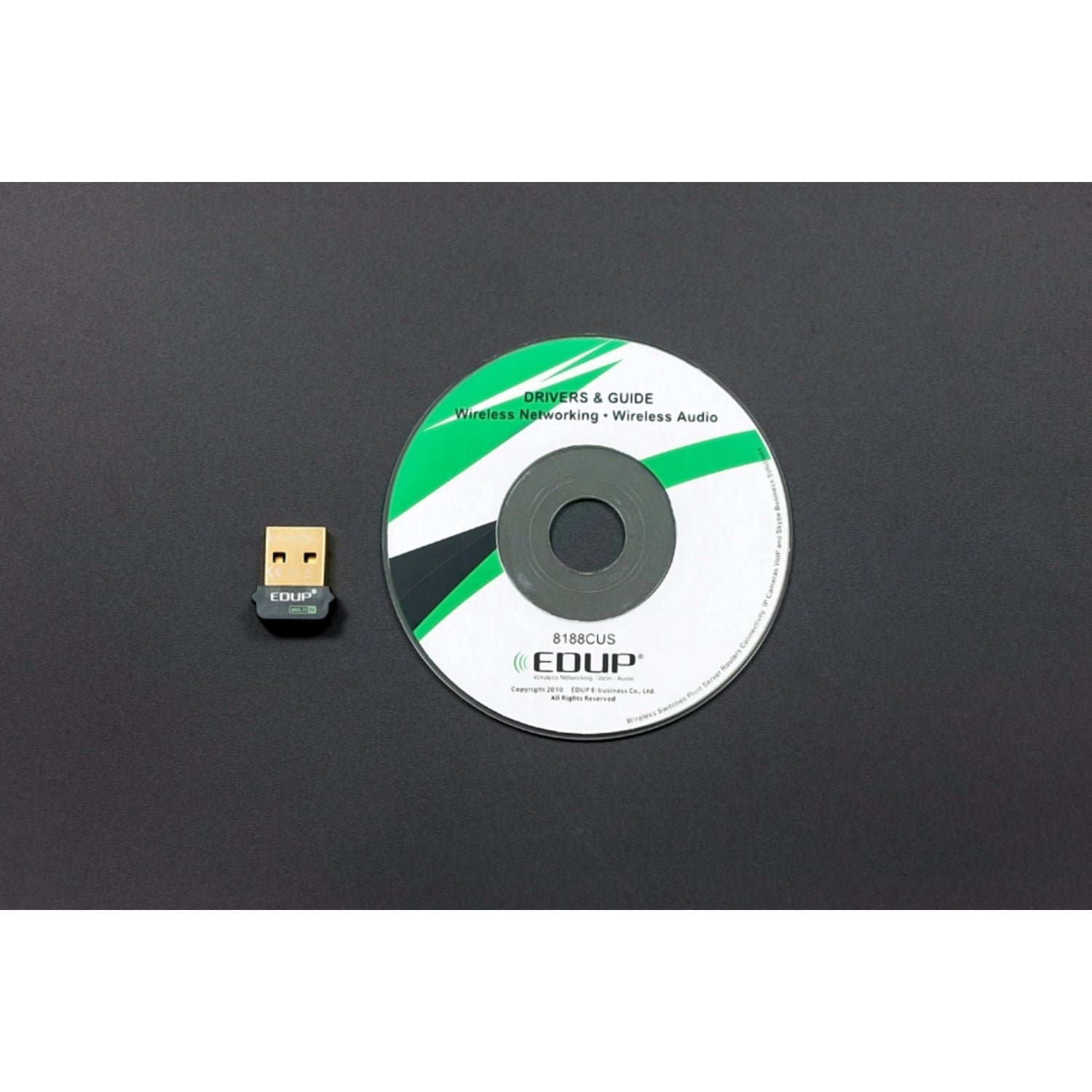EDUP's Wireless-N USB 2.0 Adapter is a game - changer! It lets you effortlessly connect your laptop, PC, or miniPC to any Wireless - N network at home or in the office. Wireless - N (802.11n) networks are five times faster than traditional Wireless - G (802.11b) networks, enabling high - speed data transfers, smooth online gaming, and lightning - fast downloads. With this adapter, you can enjoy all the high - speed perks of Wireless - N networks on any device. Its simple setup means you'll be surfing the web, downloading movies, and sending emails in no time.
**Features**:
- MIMO technology boosts data throughput and range compared to 802.11b/g products.
- Add high - speed Wireless - N (draft 802.11n) Internet access to any USB - enabled computer.
- Download music and movies, surf the web, and email up to five times faster than previous - generation wireless networks.
- Offers broader coverage than Wireless - G networks for seamless Internet access at home or in the office.
- Works with older Wireless - G and Wireless - B networks.
- WiFi Protected Setup (WPS) makes setup and operation a breeze.
- Operating distance of up to 300 feet indoors and 900 feet in open space.
- Data transfer rate of up to 150Mbps (downlink and uplink).
- Supports USB 2.0 interface, backward - compatible to USB 1.1 and 1.2.
- Enhanced WEP and WPA wireless security for protected Internet access.
- 64 - bit/128 - bit WEP, TKIP, AES 2.400GHz ISM.
- Frequency Band Modulation Method: QPSK / BPSK / 16 - QAM / 64 - QAM.
- Supports Ad Hoc and Infrastructure modes.
- Supports IEEE 802.11e standard.
**Applications**:
- PC
- Raspberry Pi
- Cubieboard
- Radxa Rock
**Specifications**:
- Wireless Standards: IEEE 802.11n (draft), IEEE 802.11g, IEEE 802.11b.
- Frequency Band: 802.11n up to 150Mbps (downlink and uplink); 802.11g 54 / 48 / 36 / 24 / 18/ 12 / 9 / 6 Mbps auto - fallback; 802.11b 11 / 5.5 / 2 / 1 Mbps auto - fallback.
- Chipset: Realtek8188CUS.
- RF Frequency: 2412 - 2462 MHz (North America), 2412 - 2472 MHz (Europe), 2412 - 2484 MHz (Japan).
- Radio Channel: 1 - 14 channels (Universal Domain Selection).
- Range Coverage: Up to 3 times farther range than 802.11g.
- Antenna type: Integrated Antenna.
- Roaming: Full mobility and seamless roaming from cell to cell.
- RF Output Power: 13 - 17 dBm (Typical).
- Modulation: 11n BPSK, QPSK, 16QAM, 64QAM with OFDM; 11g BPSK, QPSK, 16QAM, 64QAM, OFDM; 11b DQPSK, DBPSK, DSSS, CCK.
- Data Security: 64/128 - bit WEP Encryption, WPA, WPA - PSK, WPA2, WPA2 - PSK. TKIP/AES.
- Network: Auto - switch to use 802.11n or 802.11g or 802.11b mode; supports Ad - Hoc, Infrastructure WLAN network; wireless roaming; data rate auto - fall - back under noisy environment or longer range distance; site survey with profile function.
- Configuration & Management: Plug - and - Play setup and installation; management utility supports 2000 / XP/ Vista.
- Media Access Control: CSMA/CA with ACK.
- LED Indicator: Link/Active (Green).
- Operating System: Windows 2000, XP 32/64 - bit, Vista 32/64 - bit, Linux and MAC OS X.
- Environment: Operating Temperature 0°C to 40°C; Storage Temperature - 20°C to 75°C; Operating Humidity 10% - 90% (Non - Condensing); Storage Humidity 5% - 95% (Non - Condensing).
- Compliant: FCC (USA), CE Mark (Europe), RoHS Compliant, Wi - Fi Compliant.
**Shipping List**:
- 150M Compact WiFi (802.11n) Module for Raspberry Pi x1

Using this 150M Compact WiFi (802.11n) Module for Raspberry Pi is a piece of cake. First, make sure your device supports a USB connection. Then, simply plug the adapter into a USB port on your device, like a PC, Raspberry Pi, Cubieboard, or Radxa Rock. The plug - and - play feature means it should start working right away. If you're using Windows 2000, XP, or Vista, you can use the management utility to set it up even more easily.
For security, you can use the enhanced WEP and WPA wireless security options. If you're not tech - savvy, the WiFi Protected Setup (WPS) is a great way to quickly and securely connect to your network.
When it comes to placement, keep in mind that the adapter has an operating distance of up to 300 feet indoors and 900 feet in open space. So, try to place your device within this range of your router for the best connection.
As for maintenance, it's pretty straightforward. Keep it clean and free from dust. Avoid exposing it to extreme temperatures. The operating temperature range is from 0°C to 40°C, and the storage temperature should be between - 20°C and 75°C. Also, make sure the humidity levels are within the specified ranges: 10% - 90% (non - condensing) for operation and 5% - 95% (non - condensing) for storage.
Finally, if you experience any issues with the connection, like slow speeds or dropped signals, check if there are any sources of interference nearby. You can also try moving your device closer to the router or switching the network mode if your adapter supports it.